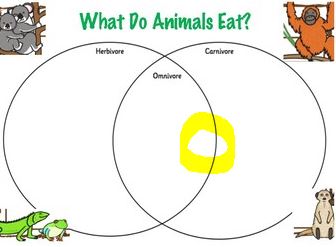⚠️ Apparently “grain free”, “boutique”, and “novel ingredient” diets (or any diets not manufactured by Mars, Nestle, or Colgate-Palmolive) may give your pet heart failure 💔
Yes, it may be true.
But what are the reasons it may be true?
In this article I’ll offer some insider background knowledge, discuss what the 500 or so “diet-related” Dilated Cardiomyopathy (DCM) reports really say, and discuss what I see as the real problem – why millions of pets, including yours, may be suffering.
Lastly, I’ll offer my advice on how to prevent your pet from suffering a similar fate.

Research?
It’s very easy and very common in the pet food industry to conduct a seemingly legitimate study which “links” some kind of cause to some kind of condition. A tenuous hypothesis can easily be publicised through media, viralised, and become widely believed as “fact”. If it’s on the Internet, it’s true, isn’t it?
We saw it last year with “raw chicken causes paralysis” by University in Melbourne, a sketchy hypothesis wrapped in a widely spun media release. In many aspects the DCM vs Grain Free study is the same.
It’s important to be sceptical with any “links” or “hypotheses” drawn from research, and be open minded as to what the research really says.
A little background…
Let’s talk about something without saying what it is. I’ll call it Element X.
Nutrition boffins determined many years ago Element X was something cats need to have in their diet in order to retain health. It was believed at the time dogs didn’t need it, and could produce it naturally.
As it wasn’t considered necessary for dogs, it wasn’t included in AAFCO standards as a requirement in dog food, so many manufacturers didn’t include it.
Let’s briefly consider AAFCO standards – they determine what we currently know and believe a pet requires in their diet. Over time those standards are adjusted as new information arises (such as when loads of pets get sick). Just to clarify further, those standards tell manufacturers what exactly needs to be added to a bag of grains or non-grains to sustain the health of a pet, with the assumption it will be the only food they’ll be fed.
Way before the DCM/grain free scare there was evidence that dogs, or at least some dogs, were becoming deficient in Element X when fed a commercial diet/kibble.
Some pet food manufacturers reacted to this information, perhaps even researched it further, and consequentially ensured their products contained a sufficient amount of Element X. What they didn’t do, however, was tell their competitors. Why would they?
It’s possible those manufacturers (and we’re talking about the major corporate manufacturers who produce a significant amount of grain food), saw this knowledge as a perfect way to damage the reputation of their competitors in one fowl swoop. Yes, this stuff happens in the pet food industry. You see, for those big powerful manufacturers, the biggest blow to their profits in recent years has been the rise and success of all the smaller competitors offering grain free alternatives, widely regarded in the social media world to be better 🤔
As a side note, their other big blow has been raw feeders, hence the “research” that raw chicken is DANGEROUS and HARMFUL and CAN CAUSE PARALYSIS 🤔🤔🤔
Sorry, I sidetracked a little, so lets get back to Element X…
Element X may or may not be the key factor in diet related DCM, but the reports show it plays a very significant part. Element X isn’t anything to do with grain or grain free, it’s to do with the far more essential, species appropriate stuff – ingredients sourced from animals.
If you were wondering what Element X could be, it’s taurine.
Taurine – From brains, retina, heart, and blood of prey
If you read the reports, or if you study previous research on DCM, you’ll note taurine appears a key factor. It’s an amino acid sourced from animals, particularly the brains, retina, heart, and blood.
Not many of the animals in the report were tested for taurine deficiency (possibly due to cost), but most tested pets were were found to be deficient. Some excessively.
Many of the pets diagnosed with DCM, whether tested or not, were medicated with taurine. The health of many of those pets, especially those in the early stages, improved.
Interestingly, only a very small percentage were found not to be deficient, but this has been widely overlooked and un-publicised. Why?
Pet food problems
I speak about this a lot, but for the record I see two major problems with how people feed their pets:
- People feed their pets the same thing, all the time, from birth to illness and death.
- Most of what people feed is a product, designed for profit, which if considered for a minuscule of a second, really isn’t species appropriate. This isn’t even a radical statement, we feed carnivorous animals (cats: factually carnivores, dogs: predominantly carnivores) excessive amounts of non-carnivorous food stuffs (wheat, corn, sorghum, rice, potato), all bundled up with ambiguous (often chemical) preservatives, antioxidants, colourings, palatants. Many of those are widely regarded to be cheap and/or unhealthy. Pet food, after all, is a very efficient way of turning food industry waste into profit.
I see many problems arise from the crazy belief we need to feed our pets the same shit, every single day. Deficiencies are one glaring problem, toxin build-up is another. As humans we eat dodgy stuff all the time, but it won’t really affect us. If we ate it continuously it would likely be a very different story. We have a varied diet, our pets don’t. Why?
Earlier I stated many of the pets in the DCM report tested deficient for taurine, or were treated with taurine. Nearly all the pets in the report were fed the same unvaried diet over a significant period of time (some for the entirety of their lifespan). I really can’t stress the inherent problems enough.
Whether a pet food is packed with grains or grain free alternatives, the real issue is the ingredients being substituted (for the sake of cost cutting). Grain protein instead of meat protein. Pea protein instead of meat protein. You can’t adequately substitute what an animal would essentially source from prey.
Almost all pet food products are deficient in meat ingredients, so it’s not really surprising when our pets have health issues which point to deficiencies in amino acids such as taurine. Even if you feed a lacklustre meat-deficient kibble supplemented with muscle meats, you’re still depriving your pet of many nutrients naturally sourced from parts of prey like blood, bones, and organs.
It’s also a problem with raw feeding. If you feed your pet chicken breast every day they can become deficient in many nutrients. Organs are vital. Whole prey is vital.
Is a salmon kibble rich in taurine? Is a premium chicken kibble rich in taurine if it’s only made from chicken breast? Is a chicken kibble actually chicken meat, or is it mostly chicken carcass? What does chicken carcass offer if not supplemented with cheaper versions of anything it lacks? These are all inherent issues with pet foods.
I’d like to round off this section with a brief mention of inhibitors. It’s something I consider another potential issue with unvaried feeding. A diet may provide essential nutrients, but it’s also possible other ingredients in the diet inhibit the absorption of those nutrients. A key example would be thiamine deficiency from pet foods containing sulphite preservatives (you can google that one). The reason I mention this, is because I don’t want to overlook taurine deficiency in grain free foods being a result of other ingredients in the foods inhibiting the absorption of taurine.
Why is the DCM study (mostly) a farce?
Firstly, the powers that be (FDA, Dr Lisa M. Freeman, DVM, PhD, DACVN) shouted from the rooftops – “Hey, we think grain free foods are causing heart failure!”.
It instantly went viral, resulting in social media panic. All those whose pets had suffered heart conditions on grain free diets were instantly outraged, and some of those filed a report saying “grain free harmed my pet”. Vets picked up on it too, and accordingly filed reports if they diagnosed a DCM case and asked the owner if they feed grain free (which many do these days).
What they really should’ve done was shout “Hey people whose pets have suffered heart problems, lets conduct an unbiased study to see if we can correlate with diet!”.
The reports were consequentially a very skewed and biased subset of pets who have suffered heart problems on (mostly) grain free diets.
There are other aspects of the reports grossly overlooked. It seemed apparent many of the reports were pets in their older years, and many appeared overweight. Is it only diet which is a factor, or lifestyle and exercise regimes?
How can I protect my pet from heart failure?
Drawing conclusions (or hypotheses) from the reports, some lessons to be learned are:
- Don’t feed your pet the same thing all the time. Feed a variety. Perhaps feed them meats and organs alongside a kibble, perhaps avoid cheap kibbles formulated largely from carbohydrate grains or non-grain filler ingredients.
- If you don’t know if your pet food is any good, it probably isn’t.
- Our pets need a diet richer in ingredients sourced from prey, which sadly many pet food products don’t offer.
- Keep them active and exercised (which goes without saying really).
And finally…
- If a load of pets deprived of what they would naturally eat become deficient in some kind of nutrient naturally sourced from that diet (such as taurine), are subsequently medicated with that nutrient leading to their condition improving, then it’s very likely one of the key roots of the problem💡












